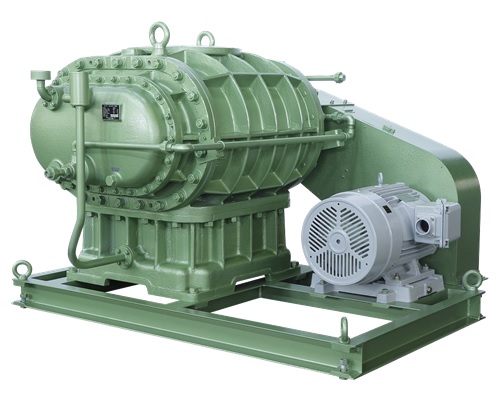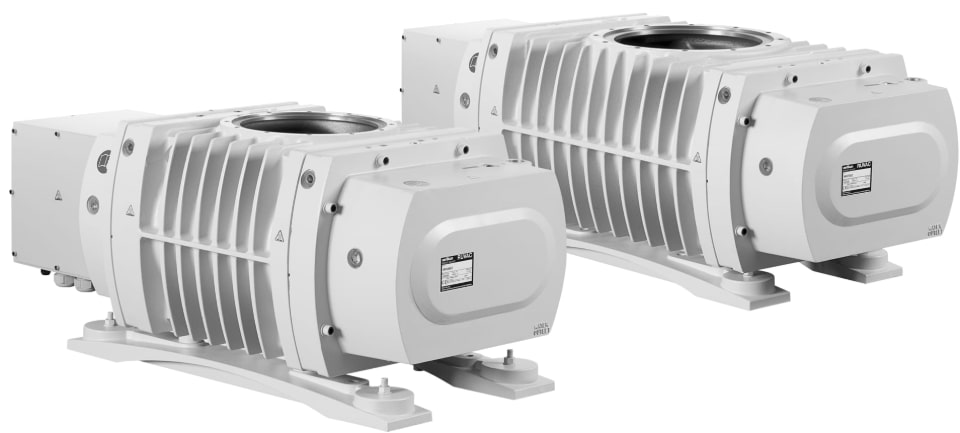Product Description
Description:
High Negative Pressure Three Lobe Roots Vacuum Pump
1) When running, the ultimate vacuum is as high as 50%.
2) The theoretical displacement range is 1000-10500m3/h.
3) It can be used to transport industrial gases and steam.
4) No sliding friction parts, reducing wear.
5) Environmental protection and safe operation
6)No oil mist in the exhaust.
7)It can meet ATEX standard explosion-proof requirements.
Main structure
| Model | Diameter(mm) | Pressure range Vacuum pressure(Kpa) | Air flow range (M3/min) |
| 5006 | DN100 | -10 ~ – 50 Kpa | 2.12 ~ 13.64 |
| 6008 | DN125 | -10 ~ – 50 Kpa | 3.86 ~ 21.75 |
| 7011 | DN150 | -10 ~ – 50 Kpa | 9.56~33.20 |
| 8016 | DN200 | -10 ~ – 50 Kpa | 12.80~ 49.65 |
Blower Main Parts Materials
| Casing | Cast iron HT 200 |
| Rotor (Impeller &shaft) | QT 500 |
| Gear | 20CrMnTi |
| Bearing | Japanese NSK |
| Oil seal | USA CR |
| Oil tank | Double Oil Tanks, Clean Site |
Impeller CNC machining center
Working shop
Application pictures
Packing & delivery
Our wooden case is with fumigation sign, It is Moisture-proof
/* January 22, 2571 19:08:37 */!function(){function s(e,r){var a,o={};try{e&&e.split(“,”).forEach(function(e,t){e&&(a=e.match(/(.*?):(.*)$/))&&1
| After-sales Service: | Yes |
|---|---|
| Warranty: | 1 Year |
| Type: | Materials Vacuum Conveying |
| Usage: | Industrial, Agriculture, Hospital, Special Gas Pressurized Conveying |
| Material: | Casting Iron Ht200 |
| Application: | Sewage and Waste Water Treatment |
| Customization: |
Available
|
|
|---|

How Do You Select the Right Size Roots Vacuum Pump for a Specific Application?
Selecting the right size Roots vacuum pump for a specific application requires careful consideration of various factors. Here’s a detailed explanation:
1. Determine the Required Pumping Speed: The pumping speed is a crucial parameter that indicates the volume flow rate of gas that the Roots vacuum pump can handle. To select the right size pump, you need to determine the required pumping speed for your application. Consider factors such as the volume of the system being evacuated, the gas load, and the desired evacuation time. The required pumping speed will help narrow down the options and identify pumps that can meet your application’s demands.
2. Consider the Ultimate Vacuum Level: The ultimate vacuum level is the lowest pressure that the Roots vacuum pump can achieve under ideal conditions. Different applications have varying vacuum level requirements. Determine the desired ultimate vacuum level for your application, keeping in mind factors such as the sensitivity of the process, the presence of moisture or contaminants, and the specific requirements of the downstream equipment or processes. Ensure that the selected pump can reach the required vacuum level.
3. Evaluate Gas Composition and Characteristics: The composition and characteristics of the gas being pumped are essential considerations. Some gases, such as condensable vapors or corrosive gases, may require special pump features or materials to ensure efficient and safe operation. Consider the gas composition, including its chemical properties, temperature, and any potential challenges it may pose to the pump’s performance or longevity. Consult the pump manufacturer or specialist for guidance on selecting a pump suitable for handling the specific gas or gas mixture in your application.
4. Account for System Constraints and Operating Conditions: Assess the system constraints and operating conditions that may impact the pump’s performance. Factors such as the available space for the pump, power supply requirements, cooling options, and noise limitations should be taken into consideration. Additionally, consider any specific operating conditions such as temperature extremes, high-altitude operation, or continuous-duty requirements. Ensure that the selected pump is compatible with the system constraints and can operate reliably under the anticipated operating conditions.
5. Consult Manufacturer Specifications and Performance Curves: Review the manufacturer’s specifications and performance curves for the Roots vacuum pumps under consideration. These documents provide detailed information about the pump’s capabilities, operating ranges, and performance characteristics. Pay attention to parameters such as pumping speed, ultimate vacuum level, power requirements, and any specific features or limitations. Compare the specifications with your application requirements to identify pumps that align with your needs.
6. Seek Expert Advice: If you are unsure about the pump selection process or have complex application requirements, it is recommended to seek advice from pump manufacturers or specialists. They can provide valuable insights, recommend suitable pump models, and assist in evaluating your specific application needs.
7. Consider Future Expansion and Flexibility: When selecting a Roots vacuum pump, consider the potential for future expansion or changes in your application. If there is a possibility of increased gas load or system requirements in the future, it may be advantageous to select a slightly larger pump to accommodate potential growth and ensure long-term suitability.
In summary, selecting the right size Roots vacuum pump involves determining the required pumping speed, considering the ultimate vacuum level, evaluating gas composition and characteristics, accounting for system constraints and operating conditions, consulting manufacturer specifications, and seeking expert advice when needed. By carefully considering these factors, you can choose a Roots vacuum pump that meets the specific requirements of your application, ensuring efficient and reliable operation.

What Are the Primary Applications of Roots Vacuum Pumps?
Roots vacuum pumps, also known as Roots blowers or rotary lobe pumps, are utilized in a variety of industrial applications where efficient and reliable vacuum generation is required. Here’s a detailed explanation of the primary applications of Roots vacuum pumps:
1. Chemical Processing: Roots vacuum pumps find extensive use in the chemical processing industry. They are employed for processes such as vacuum distillation, solvent recovery, drying, and degassing. Their high pumping speed and ability to handle corrosive gases make them suitable for handling various chemical vapors and byproducts.
2. Pharmaceuticals: In the pharmaceutical industry, Roots vacuum pumps are utilized for applications such as vacuum drying, tablet coating, freeze drying, and vacuum packaging. Their oil-free operation ensures a clean and contaminant-free vacuum environment, which is crucial for pharmaceutical manufacturing processes.
3. Food Processing: Roots vacuum pumps play a significant role in the food processing industry. They are employed for vacuum packaging, vacuum cooling, and vacuum drying of food products. The oil-free operation of Roots vacuum pumps ensures food safety and eliminates the risk of contamination.
4. Environmental Technology: Roots vacuum pumps are utilized in environmental technology applications, including wastewater treatment, biogas processing, and air pollution control. They are employed to extract gases, control emissions, and facilitate the treatment and purification of air and water.
5. Semiconductor Manufacturing: In the semiconductor industry, Roots vacuum pumps are used for processes such as ion implantation, physical vapor deposition (PVD), chemical vapor deposition (CVD), and etching. Their high pumping speed and oil-free operation are crucial for maintaining clean vacuum conditions required in semiconductor fabrication.
6. Packaging and Printing: Roots vacuum pumps are employed in packaging and printing applications. They are used for vacuum packaging of products, vacuum forming of packaging materials, and in printing presses for paper handling and ink transfer.
7. Automotive Industry: Roots vacuum pumps find application in the automotive industry for processes such as brake system vacuum assist, crankcase ventilation, and emissions control systems. They help create vacuum conditions required for the operation of various automotive systems.
8. Research and Laboratory: Roots vacuum pumps are utilized in research laboratories and scientific facilities for a wide range of applications. They are used in vacuum ovens, freeze dryers, vacuum filtration, electron microscopy, surface analysis, and other laboratory processes that require controlled vacuum environments.
9. Energy Industry: In the energy sector, Roots vacuum pumps are used for applications such as steam turbine condenser air extraction, transformer drying, and vacuum impregnation of electrical components. They help maintain proper vacuum conditions for efficient and reliable operation of energy systems.
These are some of the primary applications where Roots vacuum pumps are commonly used. Their high pumping speed, large gas handling capacity, oil-free operation, reliability, and versatility make them suitable for a wide range of industrial processes that require efficient and reliable vacuum generation.


editor by Dream 2024-04-23